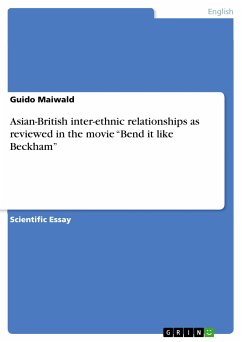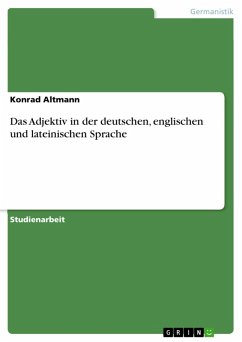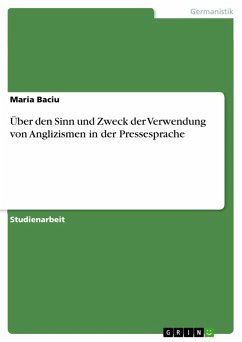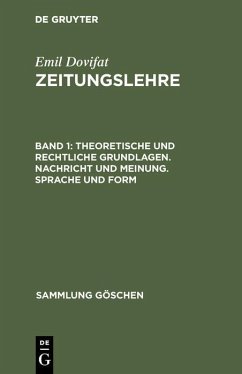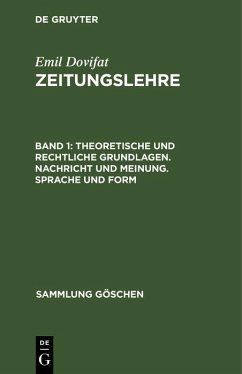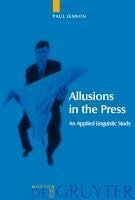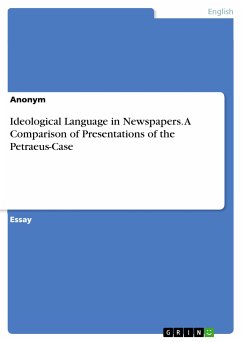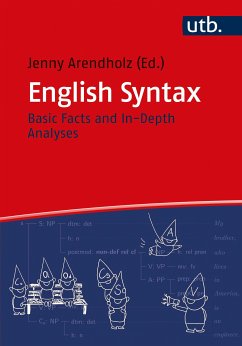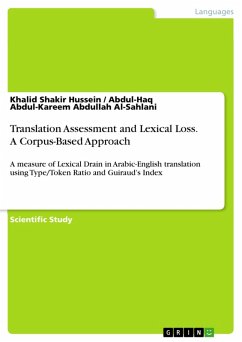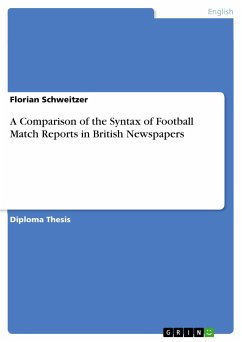
A Comparison of the Syntax of Football Match Reports in British Newspapers (eBook, PDF)
Sofort per Download lieferbar
Statt: 27,95 €**
18,99 €
inkl. MwSt. und vom Verlag festgesetzt.
**Preis der gedruckten Ausgabe (Broschiertes Buch)
Alle Infos zum eBook verschenkenWeitere Ausgaben:

PAYBACK Punkte
0 °P sammeln!
Diploma Thesis from the year 2012 in the subject English Language and Literature Studies - Linguistics, grade: 2, Justus-Liebig-University Giessen, course: English Language and Literature Studies, language: English, abstract: "Obviously, everything that happens to be printed in a newspaper or a magazine or written by a journalist is not going to be linguistically homogeneous - nor is there any reason for expecting it to be so" (Crystal/Davy 1969: 173). This statement by the famous British linguist David Crystal opens a very interesting discussion on the language of print media. If we assume th...
Diploma Thesis from the year 2012 in the subject English Language and Literature Studies - Linguistics, grade: 2, Justus-Liebig-University Giessen, course: English Language and Literature Studies, language: English, abstract: "Obviously, everything that happens to be printed in a newspaper or a magazine or written by a journalist is not going to be linguistically homogeneous - nor is there any reason for expecting it to be so" (Crystal/Davy 1969: 173). This statement by the famous British linguist David Crystal opens a very interesting discussion on the language of print media. If we assume that language as a whole is a vivid and fluid construct that always changes and will never be fixed, it is obvious that nothing which has been printed is linguistically homogenous. However, there are rules and guidelines for the use of language, such as grammar and syntax for example. As language and its use can be investigated, the present study's aim is to investigate the syntax of newspaper articles that deal with football match reports and to establish similarities and differences between different kinds of newspapers, namely broadsheets and tabloids . Nowadays, print media can no longer be imagined without sport reporting and particularly the reportage of football matches. Football has become a mainstream pastime and enjoys great popularity. It takes up a considerable part of British newspapers - depending on the targeted readership of the newspaper in question. Even though the sport sections vary in size, they can be found in every single issue and in some newspapers, take up more space than topics with supposedly more impact on peoples' lives such as politics or economics. Although the newspapers report on the same events, there are notable differences in the manner in which they report on them. If we consider sport reporting, it becomes obvious that the language is always tailored to the audience the newspaper wants to reach. Considering the great variety of newspapers and their differences with regard to focuses and targeted readerships, it can be assumed that there are differences between up-market (broadsheet) and down-market (tabloid) newspapers concerning the style of writing, the research quality or the credibility. Above all, in the sport section the differences between broadsheet and tabloid reporting become particularly apparent. Even at first glance it is obvious that differences are to be found: not only do the front page designs of the sport sections vary greatly, but it may also be assumed that there are differences concerning the degree of complexity of expression within the articles themselves.[...]
Dieser Download kann aus rechtlichen Gründen nur mit Rechnungsadresse in A, B, BG, CY, CZ, D, DK, EW, E, FIN, F, GR, HR, H, IRL, I, LT, L, LR, M, NL, PL, P, R, S, SLO, SK ausgeliefert werden.




